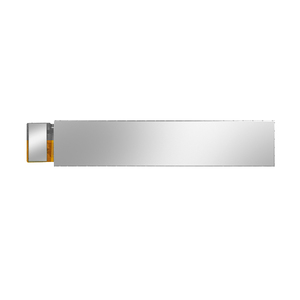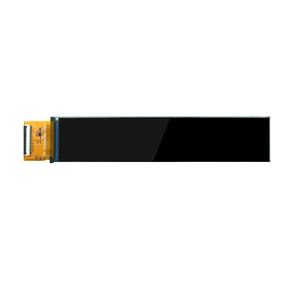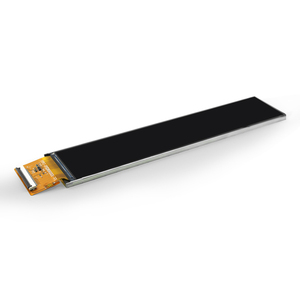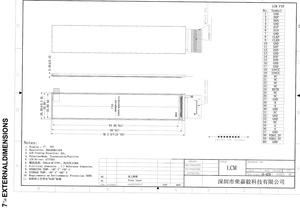(4923 products available)


















































 Ready to Ship
Ready to Ship













































































































































































Hud display are categorized into three types based on their structure and the way they project information.
Combiner HUD
These are the most commonly used in modern vehicles. The display screen is a special type of glass or plastic that is placed on top of the dashboard. It is designed to reflect light from the projector below. The projector shows the information on the display screen in such a way that it appears to be floating above the dashboard. This allows drivers to see the information without taking their eyes off the road. However, one of the drawbacks of this type is that it can be affected by the surrounding light. Thus, it may be difficult to see the information clearly in bright sunlight.
Folding Display HUD
These are the most advanced displays. They have a projector and a display screen that is mounted on the dashboard. The screen is made of a special type of glass that can be folded or curved. This allows the screen to be smaller and take up less space on the dashboard. The projector shows the information directly onto the folded screen. This technology provides a clearer image and is less affected by surrounding light. In addition, the screen can be adjusted to different angles for better visibility.
Augmented Reality HUD Display
These are the latest developments in HUD technology. They provide the most advanced features. The projectors and screens are used to create a three-dimensional image that is displayed on top of the real world view. This allows drivers to see the information in a more interactive and immersive way. For example, the display can show the position of nearby cars, the route to take, and even the location of road signs. This technology can help drivers make better decisions and reduce accidents. However, augmented reality HUDs are more expensive and require more processing power than other types of HUDs.
There are several factors to consider when choosing an HMI display for a specific application. Key considerations include:
These considerations influence the usability, functionality, and overall performance of HUD displays. Selecting a display that meets the specific requirements of an application is essential. This ensures optimal performance and a better user experience.
Maintaining a head-up display is essential to ensure its longevity and optimal performance. Here are some general maintenance tips:
By following these maintenance tips, the head-up display can function optimally. It will also have a longer lifespan. Regular maintenance and care are essential for the HUD to provide consistent performance.
There are several factors to consider when choosing a head-up display, and these include;
Screen Size and Quality
When selecting a head-up display, consider the screen size and quality. Users should select a display with a size that fits their vehicle's dashboard without being congested. A larger screen can present more information, but it may be distracting. Also, the display quality matters. Users should select displays with high resolution, brightness, and contrast ratios. These qualities will ensure that the information presented is clear and visible in various lighting conditions.
Compatibility and Installation
Consider the compatibility of the head-up display with different vehicle models. Some displays are designed for specific models, while others are more versatile. Choose a model that is easy to install and doesn't require many modifications. Displays that come with simple mounting options and adhesive attachments are preferable.
Customization and Information Displayed
Different head-up displays show other information. Select a model that displays the information that is essential to the user. For example, some displays show turn-by-turn navigation, speed, incoming messages, and calls. Also, consider the customization options available. Users should select displays that allow them to adjust the brightness levels and the information displayed to suit their preferences.
Additional Features
Consider the additional features offered by different head-up displays. Some models include voice control, gesture control, and compatibility with both Android and iOS devices. These additional features can improve the overall user experience and make the display more versatile.
Price
Price is an important factor when selecting a head-up display. Different models are available at various prices. Select a model that fits the budget without compromising important features. Consider the long-term benefits of a high-quality head-up display, such as improved safety and convenience.
Some ways to replace a head-up display include installing a new head-up display device or updating the existing device. To replace a damaged HUD display in a car, follow the below steps.
Turn off the Head-up Display
Always turn off the display before replacing it to avoid accidents and injuries. Hold down the display button until the display turns off. The display button is usually found on the front or side of the display.
Disconnect the Head-Up Display
After turning off the display, the next step is to disconnect it. Disconnect the power cable by pulling it out. If the display has a data cable, disconnect it by pressing the tabs on the sides of the connector.
Remove the Head-Up Display
To remove the head-up display, first, take out the screws that hold it in place. These screws are normally located on the bottom or back of the display. After removing the screws, gently pry the display up from its mounting using a flathead screwdriver or a trim tool. Be careful not to damage the surrounding trim or the display itself.
Install the New or Repaired Head-Up Display
Place the new or repaired display in its mounting. Make sure it is properly aligned with the opening and the surrounding trim. Secure it with the screws that were removed in step 3. Connect the power cable to the display by pushing it in. If the display has a data cable, connect it to the corresponding port on the vehicle's instrumentation display.
Turn on the Head-Up Display
After completing the installation process, turn on the display by pressing the display button. It should light up, and the information should be visible. If it doesn't, check the connections and make sure the display is properly installed.
Q1: What are the benefits of HUD displays in vehicles?
A1: Head-up displays (HUDs) in vehicles offer numerous advantages. They enhance safety by allowing drivers to access critical information without diverting their attention from the road. HUDs also improve convenience by displaying navigation instructions, traffic information, and incoming calls. Furthermore, these displays can adjust to various lighting conditions, ensuring visibility in different environments. By providing real-time updates and information, HUDs contribute to a more informed and engaged driving experience.
Q2: How does a head-up display work?
A2: A head-up display (HUD) projects information onto the windshield or a separate screen, allowing drivers to see essential data without looking away from the road. The HUD uses a computer to process the data and reflect it onto the display surface. It consists of a light source, optics, and a combiner. The light source generates the information to be displayed, and the optics system ensures the data is visible and correctly aligned. The combiner reflects the light onto the driver's line of sight, projecting the information onto the windshield.
Q3: What information does a head-up display show?
A3: A head-up display (HUD) shows various information to keep the driver informed without looking away from the road. It typically displays speed, navigation directions, and estimated time of arrival. Additionally, it can show fuel consumption, lane guidance, and incoming calls or messages. Some advanced HUDs also provide real-time traffic information and alerts. By presenting this information, HUDs enhance safety and convenience, allowing drivers to make informed decisions while focusing on the road.
Q4: Are head-up displays available in all vehicles?
A4: No, head-up displays (HUDs) are not available in all vehicles. They are typically found in high-end or luxury vehicles as a standard or optional feature. However, HUDs can also be installed in some mid-range and affordable vehicles. These aftermarket HUDs come in various types and price ranges, offering different levels of functionality. While HUDs are not universally accessible, their availability is increasing in vehicles across various price segments.
Q5: Can a head-up display be installed in a vehicle that doesn't come with one?
A5: Yes, a head-up display (HUD) can be installed in a vehicle not originally equipped with one. Various aftermarket HUDs are available, ranging from simple to advanced. These HUDs can be installed in different vehicles, offering varying levels of functionality. While the installation process may differ depending on the type of HUD, it is generally straightforward. Connecting the HUD to the vehicle's data system and mounting it on the dashboard or windshield are usually required.